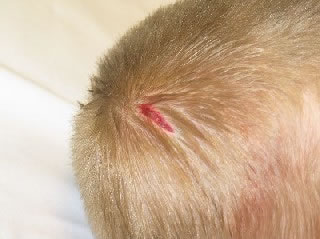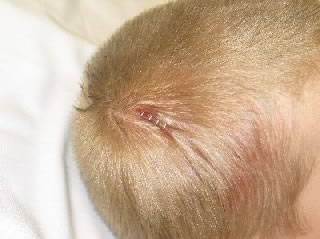Photos

Scalp laceration
This scalp laceration (cut) is gaping open. It will require closure with sutures or medical staples.
First Aid Care Advice:
- Apply direct pressure for 10 minutes to stop any bleeding.
- Wash the cut with soap and water.
Source: Self Care Decisions, LLC
Used with Permission from Schmitt Pediatric Guidelines LLC.

FIRST AID Advice - Bleeding Wound of the Head
- Apply direct pressure to the entire wound with a sterile gauze dressing or a clean cloth. Once the bleeding has stopped, cover with an adhesive bandage or gauze.
Source: Self Care Decisions, LLC
Used with Permission from Schmitt Pediatric Guidelines LLC.

Scalp Laceration (After Staples)
This photo shows a scalp laceration after it has been closed with 4 metal medical staples.
Source: Self Care Decisions, LLC
Used with Permission from Schmitt Pediatric Guidelines LLC.